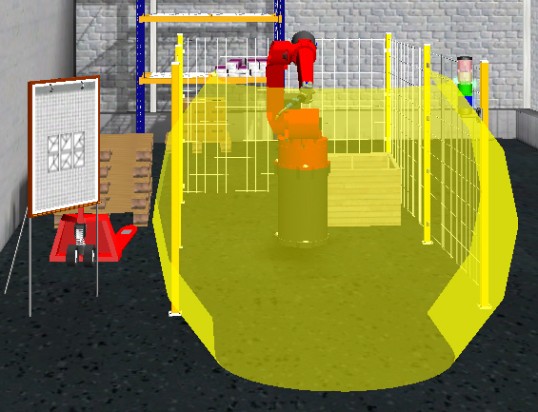- Artificial Intelligence (AI)
- Occupational exposure limit values
- List of CMR substances
- Ergonomics
- EU GHS Regulation
- Industrial Security
- Collaborative robots
- Noise
- Nanoparticles at the workplace
- NoRA OSH standards search tool
- REACH
- Reference materials
- Proficiency testing
- Radiation
- Vibration
- Virtual reality
- Work 4.0
Benefits of virtual reality for occupational safety and health

Comparison of protective devices by means of VR simulation at a workplace employing human-robot interaction
Source: IFA
All social accident insurance institutions may benefit from the expertise gathered in the SUTAVE team and laboratory of the IFA. Primary OSH objectives, such as conditional prevention, are promoted by the use of VR. In addition, VR permits:
- Pilot research for future developments
- Timely development of solutions and measures addressing tomorrow's problems and therefore serving as a sound basis for promising prevention activity and recommendations for action suitable for implementation in the field
- Realistic and practicable solutions for the design of products, production processes and safety concepts
- Empirical review of the design of safety concepts for human-system interaction
- Emphasizing critical processes of human information processing in the work system design studies
- Identification of cognitive ergonomic principles in product design and of requirements for safety and usability in product development
- Accident analysis, investigation and simulation to gain information about causal factors
- Improved planning in design projects, owing to the need for specifications to be drawn up for simulation studies
- Reduction in the material and personnel resources required for alternative field and laboratory studies